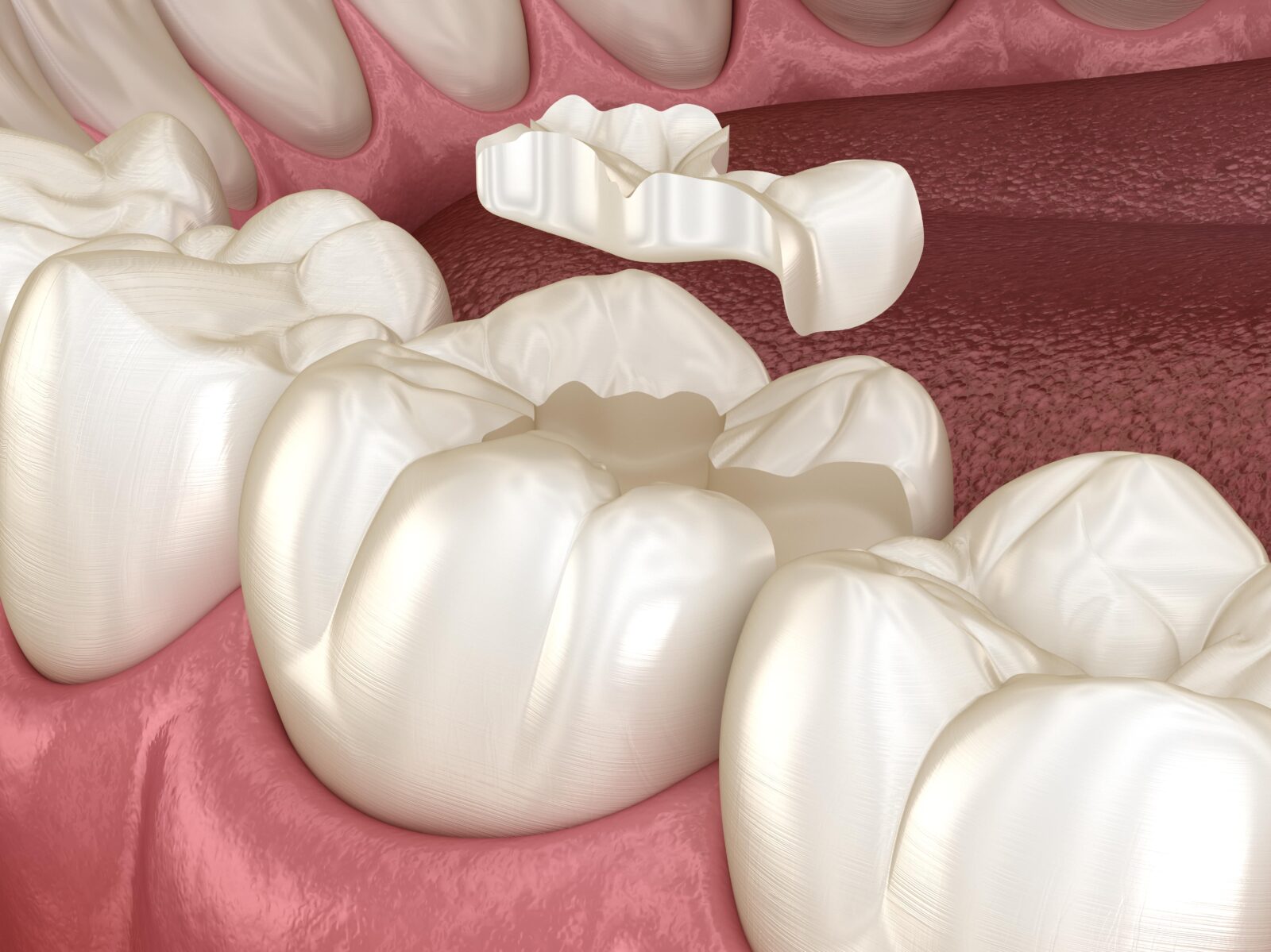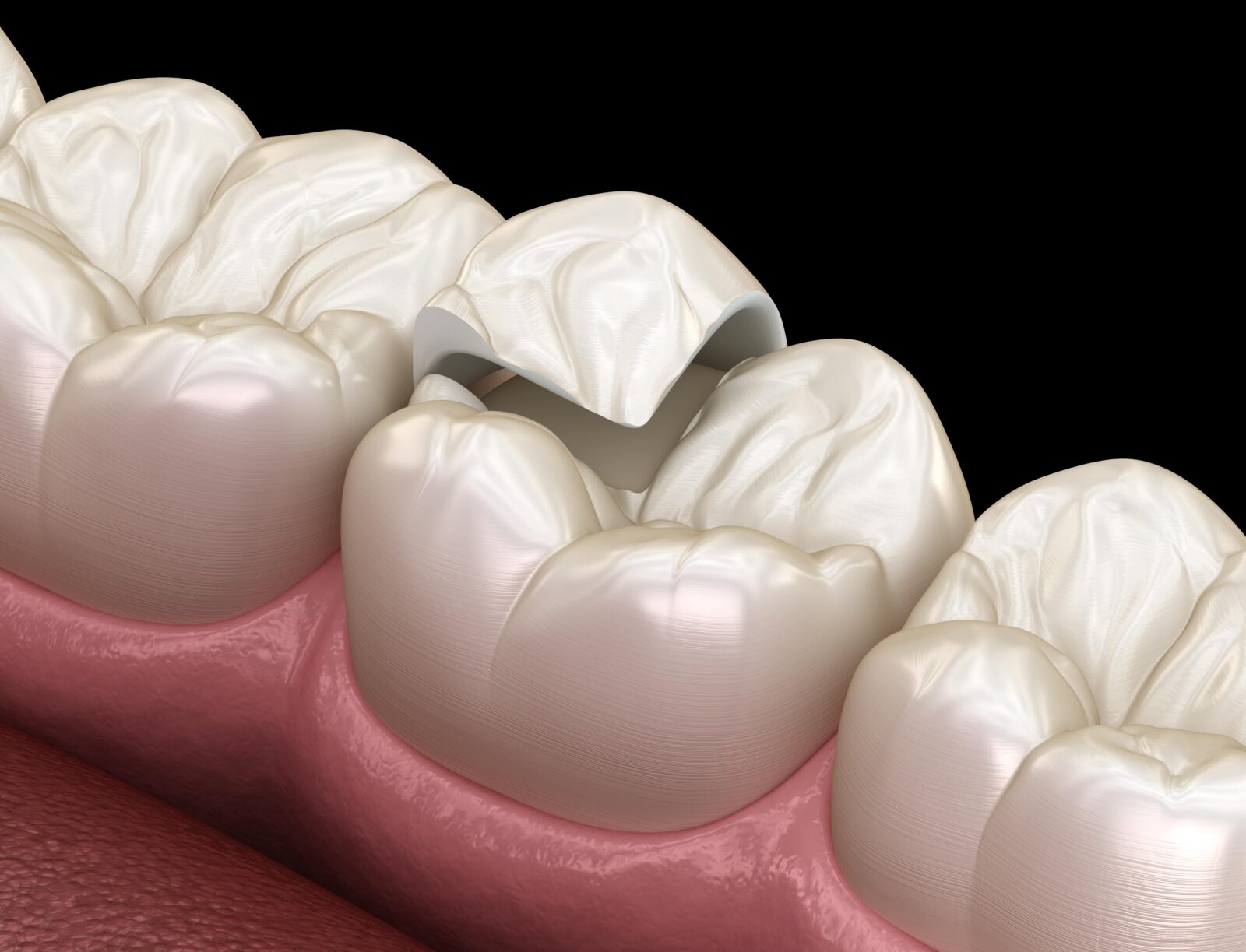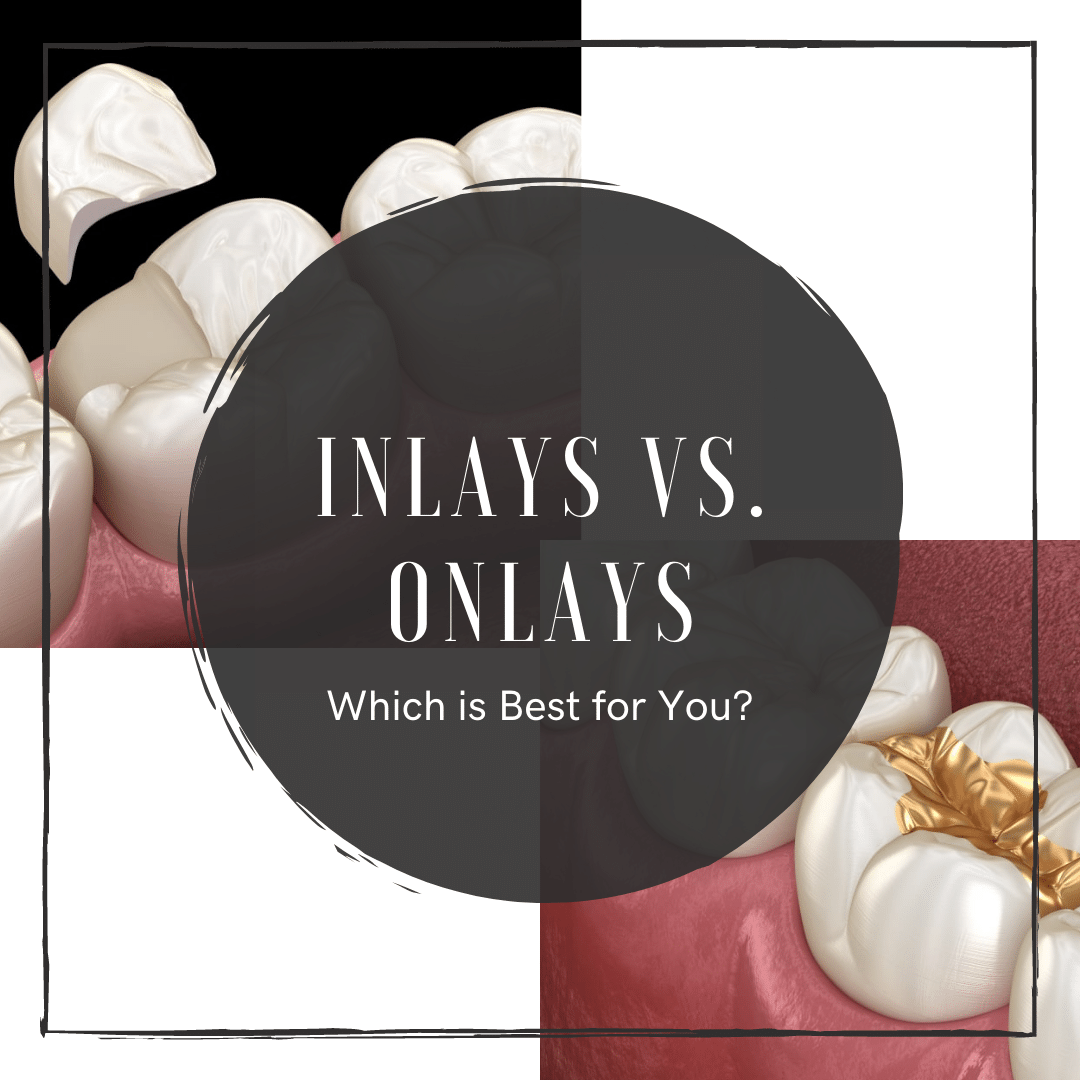When it comes to treating tooth decay, there are a few different options available. You can use a direct filling, an indirect filling, or a dental crown. If you are looking for an indirect filling to treat tooth decay, you may be wondering what the difference is between inlays and onlays. In this blog post, we will explain the differences between these two types of fillings, as well as how they compare to direct fillings and dental crowns. We will also discuss the benefits of using an indirect filling instead of a direct filling or crown. Finally, we will look at when to choose an inlay or an onlay.
What are indirect fillings?
Indirect fillings are made outside of the mouth and then bonded to the tooth. This is in contrast to direct fillings, which are placed directly into the cavity in the tooth. Indirect fillings are made from a variety of materials, including gold, porcelain, and composite resin. There are two types of indirect fillings:

Inlays
A dental inlay is a type of indirect filling that is made to cover the biting surface of a tooth. They are custom-made to fit the cavity in the tooth and are bonded to the tooth with dental cement. Inlays can be used to treat large cavities or to replace old fillings.

Onlays
A dental onlay is a type of indirect filling that covers one or more cusps (pointed ridges) of a tooth. They are custom-made to fit the cavity in the tooth and are bonded to the tooth with dental cement. Onlays can be used to treat large cavities, to replace old fillings, or to protect a tooth that has been damaged by decay or injury.
Since inlays and onlays are both indirect fillings, they take two dental appointments to place. First, the dentist will remove the decay from the tooth and take an impression of the tooth. The inlay or onlay will be made from this impression by a dental lab. At your second appointment, the inlay or onlay will be bonded to your tooth with dental cement and the margins will be polished to blend the filling with your natural tooth structure.
How do Indirect Fillings Compare to Direct Fillings and Crowns?
There are a few key differences between indirect fillings, direct fillings, and crowns.
Vs. Direct Filling
Indirect fillings are made outside of the mouth and then bonded to the tooth. This means that they can be made from a variety of materials and are more durable than direct fillings. In contrast, direct fillings are made from materials that can be easily placed into the cavity in the tooth, such as amalgam (silver) or composite resin. Indirect fillings can also restore larger areas of decay.
Vs. Dental Crowns
The main difference between an indirect filling and a dental crown is that indirect fillings preserve more of the natural tooth structure. Indirect fillings are custom-made to fit the cavity in the tooth, while dental crowns are made to fit over the entire tooth. This means an indirect filling can be used to restore a decayed part of the tooth without the need for restoring the entire tooth with a crown.
What are the benefits of using an indirect filling?
There are a few key benefits of using an indirect filling, instead of a direct filling or dental crown.
- They are more durable than direct fillings and can last for many years.
- They resist wear and tear better than direct fillings.
- They maintain their color and do not discolor like direct fillings.
- They provide better support for the tooth.
- They are less likely to leak and cause decay around the filling.
- They preserve the maximum amount of healthy tissue while restoring decayed or damaged areas.
- Can fit well in tight spaces between the teeth.
- Extremely durable and can strengthen an otherwise weak tooth.
When should I choose an inlay or an onlay?
The type of indirect filling that you choose will depend on the size and location of the cavity in your tooth. Inlays are used to treat small cavities on the biting surface of the tooth. Onlays are used to treat larger cavities or those that involve one or more cusps of the tooth.
If you have a large cavity or a cavity that involves one or more cusps of the tooth, an onlay may be the best option for you. Onlays can also be used to protect a tooth that has been damaged by decay or injury.
If you have a small cavity on the biting surface of the tooth, an inlay may be the best option for you. Inlays can also be used to replace old fillings.
In Conclusion
In this blog, we have discussed indirect fillings, also known as inlays and onlays. We have explained the difference between these two types of fillings and how they compare to direct fillings and dental crowns. Indirect fillings are made from a variety of materials and can be used to restore large cavities, replace old fillings, or protect a tooth that has been damaged by decay or injury. The type of indirect filling that you choose will depend on the size and location of the cavity in your tooth.
If you have any questions about inlays or onlays, or if you would like to schedule an appointment, please call our office today! We would be more than happy to help you choose the best option for you.






